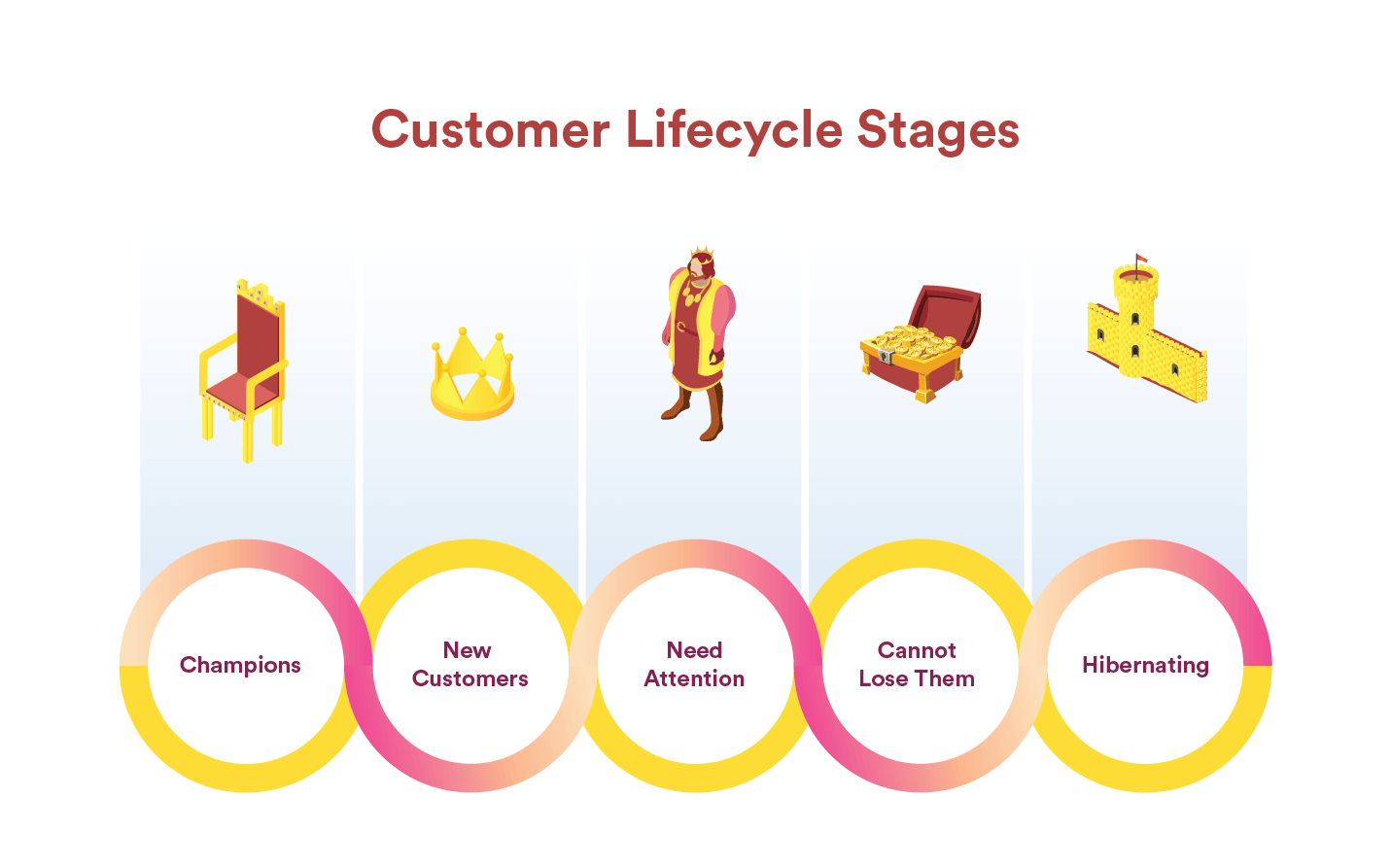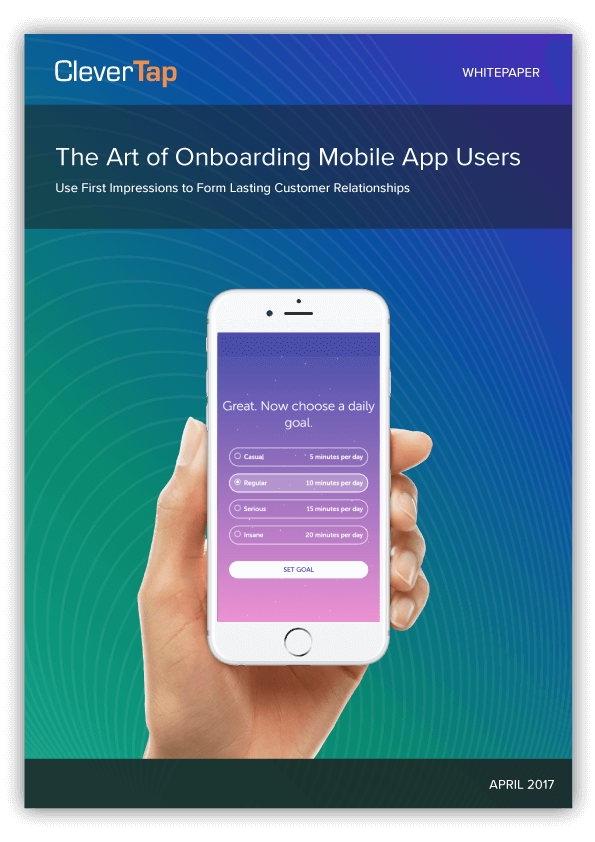You might think your app offers an outstanding experience but let’s face it: you’re not the end user. Users might perceive things that are different from your expectations.
Which begs the question: what are you doing to manage perception?
- Close to half of US consumers no longer trust brands as they once did 20 years ago. In fact, 48% said brands lack a strong identity and a clear role.01
- According to Econsultancy, 90% of all marketers believe that understanding the multichannel experience is “critical to marketing success.” But it also found that only 43% had clear understanding of customers’ journeys across channels and devices.
Customer Life Cycle Marketing Has Problems
From mom-and-pop brands to world-dominating enterprises, there are numerous challenges involved with customer life cycle marketing as it’s currently practiced.
Poor Segmentation: One Size Doesn’t Fit Most
First up, many enterprises use a minimal number of customer lifecycle stages in their marketing (if at all). Which means they may end up sending the same templated marketing message to every customer.
Unfortunately, this leads to marketing that misses the point. If you’re not talking to users based on where they are in the customer journey, or based on past behavior and digital body language, you’re wasting many valuable opportunities to convert.
Reminds me of some irrelevant emails encouraging me to check out a high-end CDN after downloading a single white paper. The messaging went something like: “Hey, thanks for downloading! We sell CDNs and you really need one!” Ugh, no real customer lifecycle management there.
There really is only one result in a one-size approach – negative perception. And the resulting stats prove it: there’s higher churn, not to mention higher user acquisition costs and ad spends that are through the roof.
Too Linear: B Doesn’t Always Follow A
Even when brands do connect with users based on life cycle stages, they often use traditional stages such as AARRR, which can be much too linear for looking at your customer funnel, which many marketers are unable to optimize.
Quick review: AARRR stands for acquisition, activation, retention, referral, and revenue, a model for business growth that was introduced back in 2007. The model hasn’t aged well seeing as its primary focus is on acquisition. We now understand that the real key to growth isn’t acquisition but user retention.
So if your KPIs still somehow revolve around acquisition, you’re not going to be rewarded for keeping customers around. Instead, you’ll be using more resources to continuously feed the very expensive acquisition machine.
Delayed Reporting: Can’t Pivot in Time
More often than not, enterprises have a difficult time achieving a single view of their customers what with specialized functions operating in isolation from others, and various technologies in their own silos.
End result: it takes time to get detailed reports on how your marketing strategies are working. When you have to cobble together data from a bunch of silos, you’re in no position to pivot as customer tastes or trends fluctuate. And they always do change.
Another drawback to a lack of real-time insight on your app users: you can’t bring context or personalization to your marketing messages. Instead of recommending them another product based on what they just bought or viewed, you’re simply guessing what they like.
The Solution Lies in Experiences
These challenges in marketing and customer lifecycle management aren’t new. But there’s a way to tackle them all in one fell swoop and give users the motivation to stay on and keep using your app.
And the solution lies in a paradigm shift: as you market to every stage in the life cycle, focus on delivering outstanding customer experiences.
What is an Experience? Perception Plus Value
An experience is a user’s perception of your brand. Conversely, your brand is built entirely upon the shifting sands of customer perception.
All these things contribute to how a user perceives your brand and the overall customer experience:
- What apps or services do you sell?
- How do you communicate with prospects and customers?
- How do you sell your app and its connected services?
- How do you develop the app and continuously improve it?
- How does your customer support team solve issues?
- Who leads your company?
- And more…
Customers will build that perception as they interact with your app and your organization. And as they receive value through that interaction.
I mention shifting sands in the definition, because perceptions can change.
Look at your own experience as a consumer. There have doubtless been times you switched from being a longtime power user to suddenly wanting nothing to do with an app you’re using once it starts crashing frequently, or when customer support doesn’t respond, or when there’s a snafu during payment.
An outstanding customer experience then is one where users receive the trust, respect, and meaningful connection that they need.
An Econsultancy report on Customer Experience Optimization finds that over 96% of companies find experience optimization as important with every 2 in 5 companies making it their top priority. On the flip side though – only 3% of companies have the capability required to deliver on this promise of real-time personalization and behavioral targeting02.
The Benefits of Shifting to Experiences
When you focus on customer experience optimization, you build a process that is data-driven, that is not temporary but long term, and one that is continuously improving.
This necessarily means investing time and resources into a tech stack that can give you up-to-the-minute data on your users activities: what they’re consuming, where they’re spending the most time, what actions they’re doing. So that instead of guessing where they are in the customer life cycle, your customer optimization platform can tell you exactly where each user is and what segments they belong to.
This means instead of sending messages derived from cookie-cutter templates, you utilize users’ behavioral data to make your communication more relevant. Allow it to provide better context, making in-app notifications and push notifications more personalized.
This also means you’re in better shape to optimize at any step of the way. Instead of a linear AARRR funnel, you’re in a continuous loop of iterations, constantly improving on your product and your marketing so the user experiences a product that’s always getting better.
According to a study by Aberdeen Group, companies that align service and marketing programs around the customer experience can result in as much as a 55% annual increase in customer satisfaction rates, and as these satisfied customers stay loyal, a 7.6X annual increase in customer retention rates03.
So why invest all this effort into experience testing and optimizing customer experience processes? Because your enterprise benefits from focusing on the customer. The brand perception improves. Loyal users turn into evangelists bringing in new users and increasing user retention rates. And you reap the benefits of higher CLTV and increased revenue when you use experiences as the focus of your customer lifecycle management efforts.
Read More on Customer Lifecycles and Experiences
- Lifecycle Marketing: The Secret to Converting Prospects into Loyalists
- Customer Experience Optimization: Using Psychology to Improve Your UX
- The Hidden Psychology of Successful Mobile Apps (Infographic)
- Why Users Uninstall Apps: 28% of People Feel Spammed [Survey]

The Art of Onboarding Mobile App Users
Shivkumar M 
Head Product Launches, Adoption, & Evangelism.Expert in cross channel marketing strategies & platforms.
Free Customer Engagement Guides
Join our newsletter for actionable tips and proven strategies to grow your business and engage your customers.







